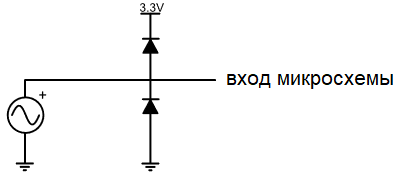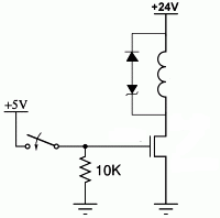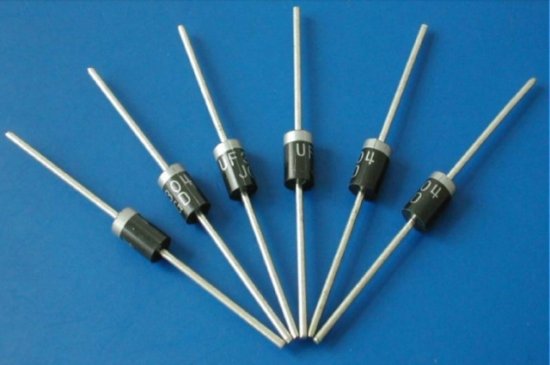How diode protection works
The range of diodes is not limited to rectifiers. In fact, this area is very broad. Among other things, diodes are used for protective purposes. For example, to protect electronic devices when they are switched on incorrectly with the wrong polarity, to protect the inputs of various circuits from overloading, to prevent damage to semiconductor switches from self-induced EMF pulses that occur when switching off inductive loads, etc. n.
To protect the inputs of digital and analog microcircuits from overvoltage, circuits of two diodes are used, which are connected in the opposite direction to the power rails of the microcircuit, and the middle point of the diode circuit is connected to the protected input.

If a normal voltage is applied to the input of the circuit, then the diodes are in a closed state and have almost no effect on the operation of the microcircuit and the circuit as a whole.
But as soon as the potential of the protected input exceeds the supply voltage, one of the diodes will go into the conducting state and manipulate this input, thus limiting the allowed input potential to the value of the supply voltage plus the forward voltage drop across the diode.
Such circuits are sometimes included immediately in an integrated microcircuit at the design stage of its crystal or placed in a circuit later, at the stage of development of a node, block or the entire device. Protective two-diode assemblies are also produced in the form of ready-made microelectronic components in three-terminal transistor boxes.
If the protection voltage range needs to be extended, then instead of being connected to the busses with supply potentials, the diodes are connected to points with other potentials that will provide the required permitted range.
Long cable lines sometimes experience powerful interference, for example from lightning strikes. To protect against them, more complex circuits containing not only two diodes, but also resistors, limiters, capacitors and varistors may be needed.

When switching off an inductive load, for example, a relay coil, choke, electromagnet, electric motor or magnetic starter, according to the law of electromagnetic induction, an EMF pulse of self-induction occurs.
As you know, the emf of self-induction prevents the current from decreasing through any inductance, trying to somehow keep the current through it unchanged. But at the moment when the source of current from the coil is turned off, the magnetic field of the inductance must dissipate its energy somewhere, the value of which is

So, as soon as the inductance is turned off, it itself becomes a source of voltage and current, and at this moment a voltage appears on the closed switch, the value of which can be dangerous for the switch. With solid state switches this is fraught with damage to the switch itself as the energy will dissipate quickly and at very high switch power. For mechanical switches, the consequences can be sparks and burning of the contacts.
Due to its simplicity, diode protection is very common and allows you to protect various switches interacting with an inductive load.
To protect the switch with an inductive load, the diode is connected in parallel with the coil in such a direction that when the operating current initially flows through the coil, the diode will be locked. But as soon as the current in the coil is turned off, an EMF of self-induction occurs, which has the opposite polarity to the voltage previously applied to the inductance.
This self-inductance emf unlocks the diode, and now the current that was previously directed through the inductance moves through the diode, and the magnetic field energy is dissipated on the diode or on the quench circuit in which it is connected. In this way, the toggle switch will not be damaged by excessive voltage applied to its electrodes.

When the protection circuit includes only one diode, the voltage across the coil will be equal to the forward voltage drop across the diode, that is, in the region of 0.7 to 1.2 volts, depending on the magnitude of the current.
But since the voltage in the diode in this case is small, the current will drop slowly, and in order to speed up the shutdown of the load, it may be necessary to use a more complex protection circuit, which includes not only a diode, but also a zener diode in series diode, or diode with resistor or varistor — a complete quenching circuit.

